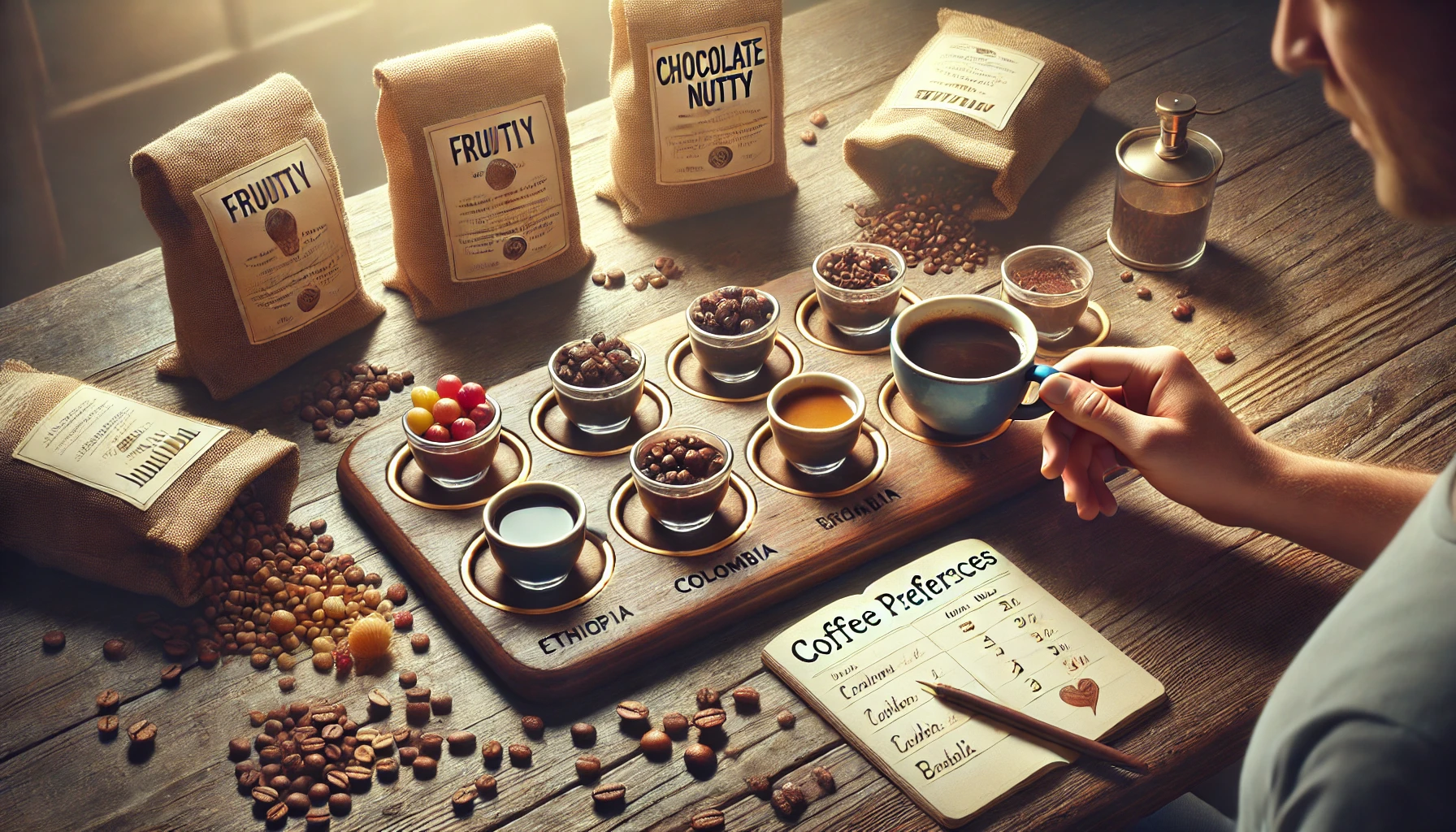With so many options on the shelves—light roast, dark roast, single-origin, blends, fruity notes, chocolaty finishes—it’s easy to feel overwhelmed when trying to choose the perfect coffee. The good news? Once you understand your own taste preferences, selecting the right coffee becomes a fun and rewarding process.
Whether you’re new to the world of coffee or just looking to refine your palate, this guide will help you make more confident choices and enjoy each cup even more.
Understand the Basics: What Affects Coffee Flavor
Several key factors influence the taste of coffee. Knowing how they work gives you the tools to find a flavor you truly enjoy.
Origin
Where coffee is grown affects its flavor. This is known as “terroir,” a term borrowed from the wine world. Climate, soil, and altitude all contribute to the bean’s unique profile.
- Ethiopia: Floral, citrus, bright acidity
- Colombia: Nutty, balanced, mild sweetness
- Brazil: Chocolatey, low acidity, full-bodied
- Kenya: Berry-like, winey, vibrant acidity
- Indonesia: Earthy, spicy, heavy body
Roast Level
Roasting transforms the flavor of green coffee beans. The longer the roast, the darker and bolder the taste.
- Light Roast: More acidity, retains origin characteristics, fruity or floral notes
- Medium Roast: Balanced body and acidity, sweet and smooth
- Dark Roast: Low acidity, more bitterness, smoky or chocolaty notes
If you prefer bright, delicate flavors, go for a light roast. If you enjoy strong, bold coffee, a dark roast might be more your style.
Processing Method
After the coffee cherries are harvested, they must be processed to remove the fruit and dry the beans. Each method affects taste.
- Washed (Wet) Process: Clean, crisp, high acidity
- Natural (Dry) Process: Fruity, sweet, complex
- Honey Process: Balanced, smooth, mild fruitiness
These methods aren’t always listed on packaging, but you’ll often find them on specialty or gourmet labels.
Know Your Flavor Preferences
Everyone’s palate is different. Some people prefer smooth and mild coffee, while others love bold and punchy flavors.
Ask yourself:
- Do you enjoy fruity or citrusy flavors? Try African origins with light roasts.
- Do you like chocolate, nuts, or caramel? Go for Latin American coffees, medium roasts.
- Do you prefer strong, bitter coffee? Choose dark roasts or espresso blends.
- Do you drink coffee black or with milk and sugar? This affects how flavor comes through.
If you’re not sure, try tasting two coffees side-by-side. It’s one of the easiest ways to start identifying your personal preferences.
Try Single-Origin Coffees
Single-origin coffee comes from one specific location—sometimes even a single farm. These coffees offer unique flavors that reflect their terroir and are great for discovering what you like.
Blends can be delicious too, but they’re often designed for consistency rather than distinct flavor notes. If you’re exploring, single-origin is the way to go.
Experiment with Brew Methods
The same coffee bean can taste dramatically different depending on how it’s brewed. Your favorite brewing method could reveal the perfect coffee style for you.
- Pour-Over (e.g. V60): Highlights clarity and acidity
- French Press: Emphasizes body and depth
- Espresso: Intensifies strength and bitterness
- Cold Brew: Reduces acidity, smooth and mellow
- AeroPress: Versatile—can be bright or rich depending on recipe
Try brewing the same beans using different methods to see how the flavors change.
Read the Labels and Tasting Notes
Quality coffee often includes tasting notes on the packaging, like “floral,” “berry,” “toffee,” or “cocoa.” These aren’t additives—they’re natural characteristics developed through the bean’s origin, processing, and roast.
Use these notes as a guide and see how they align with your experience. Over time, your palate will get better at detecting specific flavors.
Look for:
- Roast date: Fresher is better (consume within 2–4 weeks of roast)
- Origin and region: Helpful for flavor expectations
- Roaster profile: Some focus on light roasts, others on classic espresso blends
Try Coffee Subscriptions or Sampler Packs
If you’re unsure where to begin, coffee subscriptions or sampler kits are a great way to taste a range of beans without committing to a full bag. Many specialty roasters offer curated selections based on your preferences.
They often include detailed flavor guides, making it easier to learn what you like and what to avoid.
Keep a Coffee Journal
As you try new coffees, write down your thoughts. Record things like:
- Roast level
- Origin
- Brewing method
- Tasting notes
- Your personal rating
Over time, patterns will emerge. You’ll start to notice that you consistently enjoy certain regions, roast levels, or flavor notes.
Don’t Be Afraid to Ask for Help
Baristas and roasters love to talk about coffee. Don’t hesitate to ask for recommendations based on your preferences. If you visit a local café or specialty store, they can guide you toward beans that match your taste profile.
Online roasters often have chat support or filtering tools that help you narrow down options.
Final Thoughts: Find the Coffee That Feels Like You
Choosing the right coffee is part discovery, part adventure. You don’t need to be a sommelier or a trained barista—just curious and open to trying new things. By learning how origin, roast, and brew method affect taste, you’ll be able to move from guessing to knowing exactly what you love.
And when you find that perfect cup—the one that makes you pause and smile—you’ll realize it was worth the journey.
